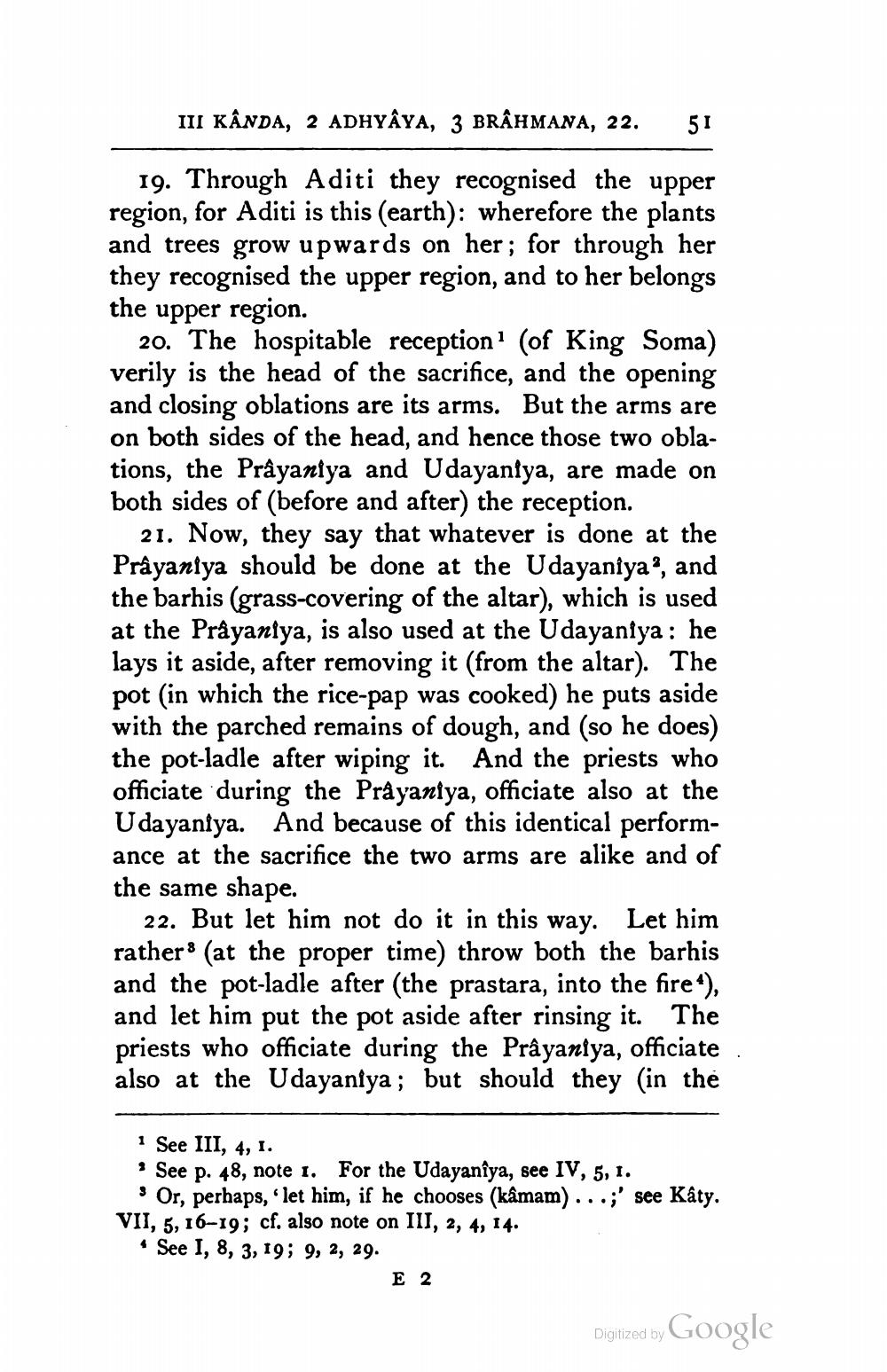________________
III KANDA, 2 ADHYAYA, 3 BRAHMANA, 22. 51
19. Through Aditi they recognised the upper region, for Aditi is this (earth): wherefore the plants and trees grow upwards on her; for through her they recognised the upper region, and to her belongs the upper region.
20. The hospitable reception1 (of King Soma) verily is the head of the sacrifice, and the opening and closing oblations are its arms. But the arms are on both sides of the head, and hence those two oblations, the Prâyaniya and Udayaniya, are made on both sides of (before and after) the reception.
21. Now, they say that whatever is done at the Prâyaniya should be done at the Udayaniya', and the barhis (grass-covering of the altar), which is used at the Prâyaniya, is also used at the Udayaniya: he lays it aside, after removing it (from the altar). The pot (in which the rice-pap was cooked) he puts aside with the parched remains of dough, and (so he does) the pot-ladle after wiping it. And the priests who officiate during the Prayaniya, officiate also at the Udayaniya. And because of this identical performance at the sacrifice the two arms are alike and of the same shape.
22. But let him not do it in this way. Let him rather (at the proper time) throw both the barhis and the pot-ladle after (the prastara, into the fire1), and let him put the pot aside after rinsing it. The priests who officiate during the Prâyaniya, officiate also at the Udayaniya; but should they (in the
1 See III, 4, I.
See p. 48, note 1. For the Udayanîya, see IV, 5, 1. 'Or, perhaps, 'let him, if he chooses (kâmam).. VII, 5, 16-19; cf. also note on III, 2, 4, 14.
See I, 8, 3, 19; 9, 2, 29.
E 2
see Kâty.
Digitized by
Google




